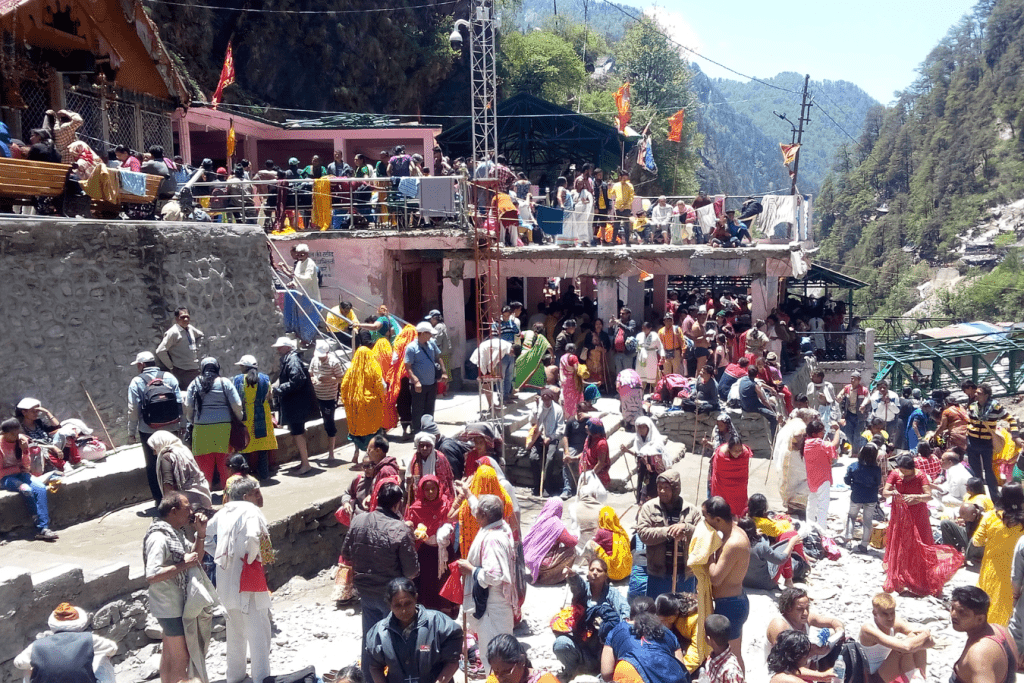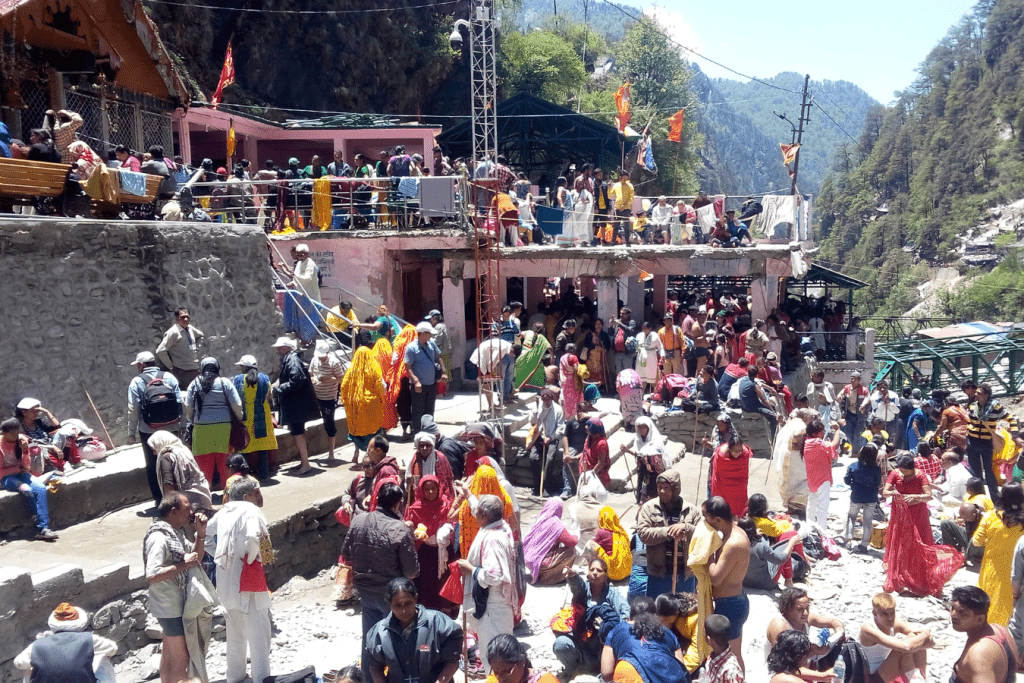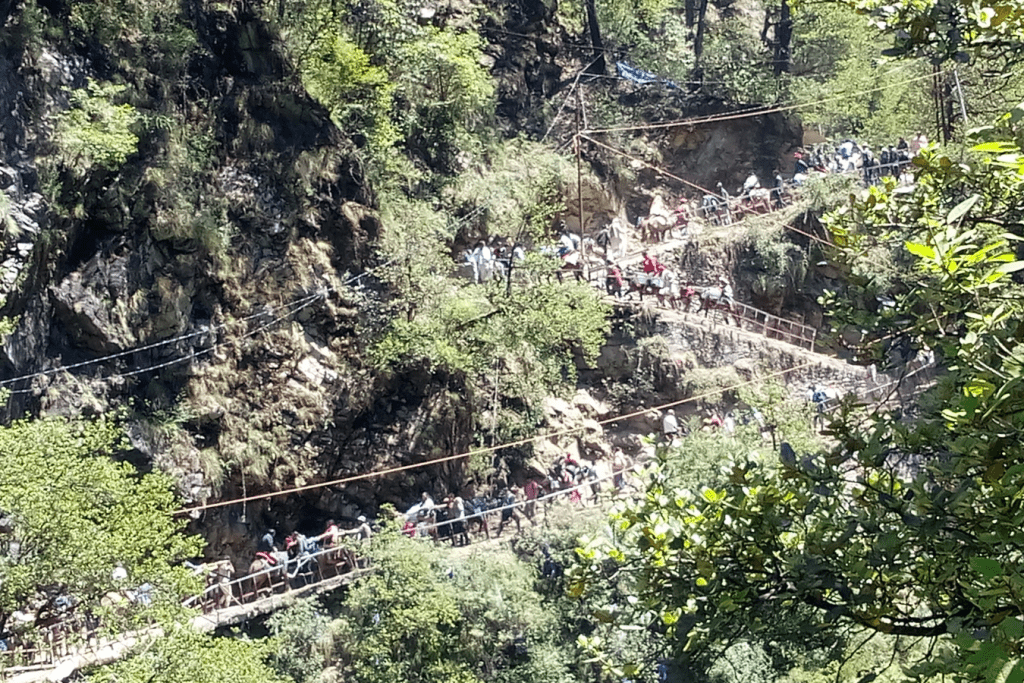Yamunotri is a peaceful and sacred place high up in the Garhwal Himalayas of Uttarakhand. It’s known as the source of the River Yamuna and is one of the four main stops in the Char Dham Yatra, an important pilgrimage for many Hindus. But Yamunotri isn’t just about religion—it’s also about nature, legends, and the calm you feel when you’re surrounded by mountains and clean mountain air.
When you visit Yamunotri, you’re not just seeing a temple—you’re stepping into a spiritual journey. You’ll walk through beautiful forests, pass by waterfalls, and feel the deep connection this place has with ancient stories and beliefs.

So, if you’re planning a trip to Yamunotri, there’s a lot you should know. From how to get there, to what you’ll see along the way, and what to expect at the top, here’s a step-by-step guide to help you enjoy and understand everything on your journey.
1. The Sacred Start: Why Yamunotri Is Spiritually Important
Yamunotri is not just a beautiful mountain destination—it’s one of the most sacred places in Hinduism. It is known as the origin of the Yamuna River, which is deeply respected and worshipped. According to Hindu beliefs, the Yamuna is the daughter of Surya, the Sun God, and the sister of Yama, the God of Death. That’s why taking a dip in the cold, clear waters of the Yamuna is said to wash away sins and protect you from an untimely death.
Also, Yamunotri is the first stop in the Char Dham Yatra, a famous pilgrimage that includes Gangotri, Kedarnath, and Badrinath. It marks the beginning of a spiritual journey through some of the holiest places in the Himalayas.
2. Best Time to Visit Yamunotri: Let the Weather Guide You
When you’re planning a trip to Yamunotri, the weather makes a big difference. Choosing the right time will help you enjoy the journey safely and comfortably.

So, the best months to visit are April to June and September to early November.
- April to June (Summer): The weather is nice and not too cold. The snow has melted, so the paths are open and easy to walk. The mountains look green and beautiful during this time.
- September to early November (Autumn): This is just after the rainy season. The air feels fresh, and it’s less crowded, which makes the trip more peaceful.
However, you should avoid July and August. These months bring a lot of rain, and there can be landslides and roadblocks, which can make travel unsafe.
Also, it’s always a good idea to check the weather forecast before you leave, just to be sure.
3. How to Reach Yamunotri: Step by Step
Reaching Yamunotri takes a little effort, but it’s totally worth it. Since it’s in the mountains, you can’t go all the way by train or flight—but you can get pretty close by road.
Here’s how you can reach:
- By Air: The nearest airport is Jolly Grant Airport in Dehradun. It’s about 210 km from Yamunotri. From there, you’ll need to go by road.
- By Train: The closest train stations are Dehradun and Rishikesh. You can take a taxi or bus from there to continue your journey.
- By Road: From cities like Haridwar, Rishikesh, or Dehradun, you can travel by car or bus to Hanuman Chatti.
- Then, take a short 5 km drive from Hanuman Chatti to Janki Chatti. This is where your trek to Yamunotri Temple begins.
So, you’ll be using a mix of train, road, and a bit of trekking—but the views and the peaceful mountain path will make the journey special.
4. Trekking to Yamunotri: A Peaceful Walk Through the Mountains
The real adventure starts at Janki Chatti, where you begin a 6 km uphill walk to reach the Yamunotri Temple.
But don’t think it will be easy just because it’s 6 km. The path goes uphill and the air gets thinner as you climb higher—because the temple is at a height of about 3,300 meters.

What You’ll See on the Trek:
You’ll walk through beautiful forests, pass waterfalls, and see snowy mountains around you. It’s a peaceful and beautiful walk.
- The trek takes about 3 to 5 hours, depending on how fast you go and how many breaks you take.
If You Don’t Want to Walk:
That’s okay! You can hire help:
- Ponies to ride
- Palkis (chairs carried by people)
- Pitthus (porters who carry people in baskets on their backs)
These are all available at Janki Chatti.
Tips Before You Start:
- Wear good walking shoes
- Carry water, snacks, and a raincoat
- Try to be fit, because the path can feel hard
So, take it slow, enjoy the view, and make your way to the temple with a calm and happy heart.
5. Yamunotri Temple: Touching the Divine
At the top of the trail stands the Yamunotri Temple, a serene and powerful place that seems almost suspended between the sky and the earth. Originally built in the 19th century by Maharani Gularia of Jaipur, the temple is dedicated to Goddess Yamuna.

What to Expect:
- The idol of the goddess is made of black marble.
- Pilgrims often offer rice wrapped in cloth—cooked in the nearby hot springs—as a ritual.
- Aarti ceremonies here are truly magical, echoing with chants and ringing bells amidst the mountains.
6. Surya Kund and Divya Shila: Don’t Miss These Sacred Spots
Just a few steps from the temple are two incredibly spiritual sites:
- Surya Kund: A natural boiling hot spring. Pilgrims dip cloth-wrapped rice and potatoes into the spring to cook them as offerings.
- Divya Shila: A sacred rock pillar where it is customary to pray before entering the temple.
Both places carry deep spiritual energy and are essential parts of the Yamunotri ritual experience.
7. Nearby Attractions: Beyond the Temple
If you have time and energy, Yamunotri has more to offer than just the temple.
Saptarishi Kund
- A tough trek of around 10 km from Yamunotri.
- The glacial lake is believed to be the actual source of the Yamuna River.
- Surrounded by legends of the seven sages (Saptarishis).
Hanuman Chatti
- A small but scenic village, ideal for a quiet stay and acclimatization.
- Also the starting point for treks to Dodital and Darwa Top.
Barkot
- A peaceful hill town located around 49 km from Yamunotri.
- Offers better accommodation and is ideal for resting before or after the trek.
8. Practical Tips: Travel Smart
- Clothing: Dress in layers. Days are pleasant but nights can be chilly.
- Footwear: Comfortable and waterproof trekking shoes.
- Health: Carry essential medicines and keep so hydrated. Be cautious of altitude sickness.
- Connectivity: Mobile networks are weak or non-existent in most areas.
- Accommodation: Budget guesthouses and dharamshalas are available at Janki Chatti, Hanuman Chatti, and Barkot.
Conclusion
Yamunotri is more than a physical journey—it’s a spiritual one. It challenges your body but heals your soul. With every step along the rocky path, you shed a little of the noise and baggage of everyday life, and by the time you reach the temple, you’re not just in the presence of a goddess—you’re in the presence of peace.